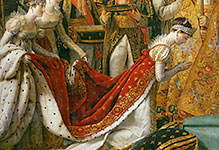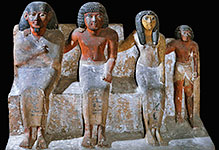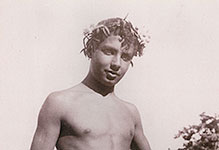
Society
Personalities, Aristocracy, Politics and Portraits, Rulers, Emperors and Kings, Crowds and Demonstrations.

#03070119
Head of Buddha from the Monastery of Tapa-Kalan, Hadda,Afghanistan. 3rd-4...

#03070122
Head of Buddha,from the Monastery of Tapa-Kalan, Hadda,Afghanistan. 3rd-4...

#03070123
Head of Buddha,from the Monastery of Tapa-Kalan, Hadda,Afghanistan. 3rd-4...

#03070125
Head of a Buddha,from the Monastery of Tapa-Kalan, Hadda,Afghanistan. 3rd-4...

#03070136
Buddha in a mandorla,from the region of Kaboul-Kapissa, Afghanistan. 3rd - 4th C...

#03070137
Hand of a monumental Buddah from Bamiyan (?), Afghanistan,4th-5th CE...

#03070147
Silver-gilt dish, Tabaristan,Iran, 8th. On this dish a ruler in Sasanian costume...

#03070158
Schist relief panel depicting the division of the Buddha's relics, from Gandhara...

#03070169
Goddesses and men protecting a palm tree. Facade of Inshushinak's...

#03070212
Gilt-bronze figure of Shakyamuni, Ming dynasty, early 15th. The gesture indicat...

#03070218
Prince Shotoku Taishi, Japan, Kamakura period, early 14th. He is shown as a 16-...
![A basket of flowers, Ding family of the Jinchang pavillion, Suzhou, 1690. The inscription on this print identifies the Ding family as coming from [near] the Jinchang pavillion. The Jinchang pavillion was near the Chang gate, in north-western Suzhou. This is the area where the district of Taohuawu was located, which had many hundreds of print workshops in the early Qing dynasty. Each print is of an auspicious subject accompanied by a verse which is a pun on the motifs depicted.The basket is an attribute of Lan Caihe, one of the Eight Immortals. It represented a receptacle of riches and was a motif which was often used to evoke harmony. In this case, it comes with the wish that one's luck would be as fragrant and as plentiful as the flowers in the basket. The magnolia, wild apple and peony are all symbols of spring, and so this print would presumably have been used during the Chinese New Year. When the magnolia and wild apple are depicted together, it means, 'May your halls be rich and honoured'. The peony was also known as fugui hua, the flower of riches and honour.
OA, 1906.11-28.3](https://archive.lessingimages.com/photo/34330/thumb)
#03070238
A basket of flowers, Ding family of the Jinchang pavillion, Suzhou, 1690. The in...





